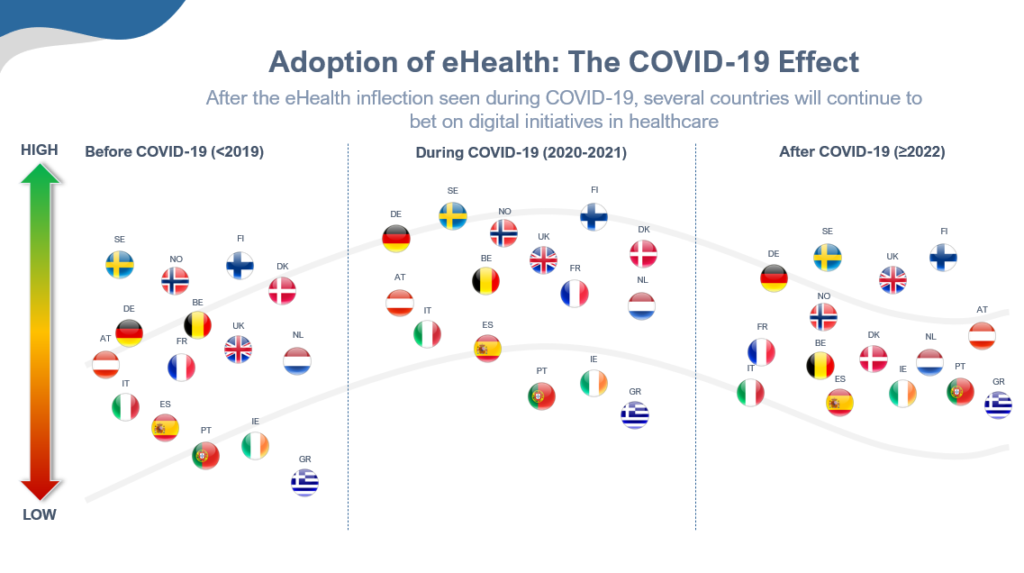Feb 21, 2023
Equalizing The Usability and Safety Of eHealthcare System With QA

In the digital age, the conventional connections between patients, physicians, and pharmaceutical firms are no longer relevant. Consult your physician, obtain a prescription, take your medication, and let them know if you have any adverse effects. Throughout the treatment, this was the cycle previously.
Technology is, however, driving change and innovation in the healthcare sector during these historically unprecedented times of the digital revolution. Numerous medical facilities are adopting electronic systems, which store a significant amount of patient data and are relying on quality engineering solutions to streamline both services and management. Only 1% of appointments with behavioral health professionals were made via telehealth in 2019, but that number increased to 38.1% in 2020 and will continue to rise. ~ Source: NCBIDigital health services are changing how patients interact with healthcare professionals, how data is shared among providers, and how treatment plans and health outcomes are decided upon and implemented. Examples include telemedicine, chatbots for patient triage, AI-enabled medical devices, and electronic health records.
Exploring Different Healthcare Systems
In order to streamline healthcare services for public, different countries have different healthcare models defined. However, all of these models have been refined over time by countries depending on their economic conditions, healthcare stats, per capita income, and more.
To underline, the United States work on implementing all of the four different models to cater to varying individual status of the citizens of the country.
-
Beveridge model: A national healthcare system that works on a model to provide free medical treatment to all while working on costs incurred through taxation.
-
Bismarck model: A healthcare model that funds healthcare services through private organizations. For instance, sickness funds that are paid by employers to insurance companies.
-
National health insurance model: Under this model, healthcare services are provided by both government agencies as well as private firms.
-
Uninsured model: In case of uninsured, the services are provided only to those who can pay for it.
Though all these healthcare systems have their own limitations and benefits, the extensive digitization done to implement these effectively creates need for QA and healthcare testing services.
The Role Of QA And Software Testing In eHealthcare
The value of software testing for eHealth Healthcare organizations is progressively creating IT solutions and putting cutting-edge new technology into use in line with global digitization. Patients now anticipate more information about their health as they emphasize prevention and maintenance in the digital age. In other words, patients are now more aware!
To monitor high-risk patients in real-time and foresee the possibility of a severe health emergency, healthcare organizations are taking preemptive measures by investing in wearable technological equipment. Digital healthcare initiatives become one of the most significant moves made by governments across the globe and the change become huge with COVID-19 pandemic, especially in Europe.
 Image Source: Velametis
Image Source: Velametis
It's important to remember that every error in a medical app has unexpected consequences that jeopardize (harm) people's health or lead to inadequate treatment. While it is uncommon, there have been instances where a flaw in a device or application used in medicine led to severe consequences, for example, a wrong entry of patients' data. Clinical equipment that is improperly designed can wreak havoc on condition metrics, impacting general health.
Intensive software testing services and QA strategies can only guarantee continuous and dependable operations in real-world circumstances before going live. Additionally, medical solutions are susceptible to cyber threats, and unauthorized data use, just like any other application. In this case, software testing is crucial to maintain the safety standards of e-healthcare applications.
Equalizing Usability And Security Of eHealthcare Applications
Security and compliance testing are essential because it protects your healthcare app from fines, penalties, data breaches, and cyberattacks. Access controls based on roles are adequate. Verify that all user roles are included in the access scenario and that only the data specified for each position is accessible. The software should offer safe authentication methods like biometrics or multi-factor authentication for the highest level of security.
Thanks to security testing that the Protected health information is implemented via encryption. Quality assurance engineers must examine the data encryption and decryption procedures and verify that the keys are kept correctly.
Testing the UI/UX Effectiveness, usability, and efficiency all impact how satisfied users are with your software. To ensure that your software is user-centric and straightforward, a testing team should begin with a usability evaluation plan that covers topics like roles, usability metrics and activities, and goals. This plan outlines how you'll evaluate your app's overall user experience and user interface.

How can E-healthcare apps be secured with the help of QA?
-
Protecting PHI
Security testing helps in Targeting all vulnerabilities, including possible dangers associated with protected health information, which is the primary goal of security testing for healthcare applications (PHI). The overall security of PHI is crucial for ensuring that healthcare applications comply with HIPAA regulations. This action likewise covers decryption attempts and other attacks.
-
Authentication of Data Storage
It is crucial to ensure that transferred data is maintained securely, and the same guidelines must be followed for data storage. Security testing is implemented to help protect your data storage methods. It examines the current security solution, data management using policies, and encryption methods.
-
Validating Identity Management
-
Approve Security Methods
What are your best practices for safeguarding the data in healthcare applications? Have you used a specific encryption technique or two-way authentication? A thorough evaluation of your safety system is carried out using security testing.
-
Improved Software Quality
Safer software is always desired while working in the healthcare industry. This includes the capacity to identify bugs early on to lower total costs and improve product quality upon release.
-
Secure Data Transmission
A healthcare program would control data transfer between several channels, including email, mobile phones, and cloud storage. Therefore, it is crucial to guarantee that the data is correctly secured and protected during the entire exchange procedure from unauthorized access. Being vigilant during transmission is essential since, at this point, a data leak could result in a severe mistake. The function of security testing serves as a barrier and allows for a secure data flow.
-
Risk Assessment
A healthcare application's level of risk can be determined far before its planned release. Your testing team may benefit from this activity to further identify and address relevant issues.
Want to know why importance of QA for healthcare? Read our blog : Why QA and testing are important for healthcare?
The amount of technological equipment in the healthcare industry has increased the demand for application security testing. The advantages of security testing for healthcare apps have been extensively addressed in this blog.
The capacity to assess how simple it is for users to utilize your product or service makes usability testing crucial. Testing with actual users allows you to determine what functions properly and what requires improvement. Making your product or service as user-friendly as feasible requires this feedback.
Any firm that wishes to improve its offerings and cater to the requirements and desires of its target market must solicit user feedback. One of the best ways to acquire this input is through usability testing, which lets you see people's interactions with your good or service.
1. Assisting you in comprehending user demands
2. Enabling you to decide on designs more effectively
3. Assisting you in improving your product
4. Allowing you to identify and address problems with your product before release
5. Assisting you in evaluating how customers use your products
Transforming The Ever-Expanding eHealthcare Sector!
With an appropriate healthcare application, the healthcare sector can function in today's rapidly developing technological environment. There isn't a single justification to downplay the significance of using an application that enables you to monitor patient records and data while safeguarding them from hackers. Healthcare software using unique software testing services can confirm the caliber of your program and keep your product secure and effective.
The healthcare sector's most critical issues include user-friendly interfaces, patient data security, quick turnaround times, and exceptional performance. Healthcare industries use software testing and quality assurance to provide patients with the right solutions. Software development firms must design applications with cutting-edge functionality to draw users to gain the desired market share.
At BugRaptors, we have team of expert testers to ensure the same. Contact us for more information at info@bugraptors.com